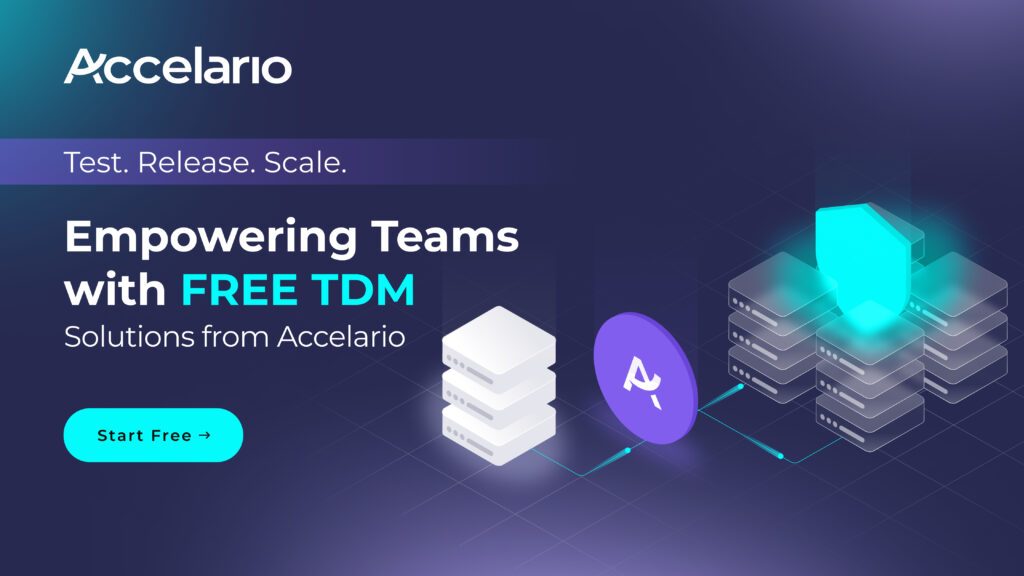Table of Contents Hide
Data Masking vs Tokenization: What’s the Difference?
 11 MIN. READING
11 MIN. READING
Data Masking vs Tokenization: Key Differences & Benefits
As organizations handle vast amounts of personal and confidential information, securing that data from breaches and unauthorized access is essential. Two key techniques commonly employed are data masking and tokenization. Understanding the differences between data masking vs tokenization is crucial in selecting the best approach for your data protection strategy. Both methods aim to safeguard sensitive data, but their mechanisms and use cases vary.
What is Data Masking?
Data masking is the process of transforming sensitive data into an unreadable format by replacing it with fictitious, yet realistic data. The goal of data masking is to protect the original data while maintaining the format and usability of the data for non-production purposes such as testing, training, or analytics. This ensures that teams can work with realistic test data without exposing confidential information.
Data masking is often used in industries like finance, healthcare, and e-commerce, where organizations handle large amounts of personally identifiable information (PII), financial data, or health records. Masking allows businesses to anonymize sensitive data so it can be used for legitimate business purposes, such as testing or analysis, without risking exposure in case of a breach.
How Data Masking Works
The masking process typically involves identifying sensitive fields (such as names, credit card numbers, or social security numbers) within a database and applying masking algorithms to these fields. For example, in a customer database, a person’s actual name might be replaced with a fictitious but valid name that maintains the same format. The same principle applies to other types of data, ensuring that the masked data retains the same structure as the original dataset.
For example:
- Before Masking: John Doe, 1234-5678-9012-3456, [email protected]
- After Masking: Jane Smith, 4321-8765-4321-1234, [email protected]
In this case, the names, credit card numbers, and email addresses have been anonymized while maintaining the original structure.
Types of Data Masking
There are various types of data masking techniques that organizations can implement based on their specific needs. Here are the most common:
- Static Data Masking (SDM): This technique involves creating a masked version of the original dataset, often in a separate environment. The original data is irreversibly altered, and the masked data is used in non-production environments like development and testing.
- Dynamic Data Masking (DDM): In dynamic data masking, the original data remains intact, but data is masked in real-time as users query the database. This is often used when there are specific restrictions on who can view certain data. Authorized users can access the full dataset, while unauthorized users only see masked data.
- On-the-Fly Masking: This technique is similar to static masking but is applied when data is being transferred or migrated from one environment to another, ensuring that the data is masked during the move.
- Deterministic Masking: This form of masking ensures that the same input will always result in the same masked output. It is useful when consistency is required, such as masking the same data across multiple datasets.
Advantages of Data Masking
- Irreversibility: Once the data is masked, the original data cannot be retrieved, which minimizes the risk of accidental exposure.
- Compliance: Data masking is essential for regulatory compliance with laws such as GDPR, HIPAA, and CCPA, which require anonymization of personal data.
- Realistic Test Data: The masked data retains the structure and format of the original data, making it ideal for development and testing environments where accurate data behavior is essential.
- Reduced Risk of Breaches: Masked data is secure even if a data breach occurs, as the masked values do not expose sensitive information.
Challenges of Data Masking
While data masking is an effective tool for protecting sensitive information, it also has its challenges:
- Complexity: Depending on the database’s size and the sensitivity of the data, the masking process can be complex and time-consuming.
- Not Suitable for Production: Data masking is typically used for non-production environments like testing and development. In production systems, you often need the real data to operate properly.
- Performance Impact: Depending on the technique used, dynamic data masking may introduce performance overheads as it processes queries in real-time.
What is Data Tokenization?
Data tokenization is a technique where sensitive data is replaced with non-sensitive tokens that have no exploitable value or meaning outside of a specific environment. Unlike data masking, which irreversibly alters the original data, tokenization retains a reversible link between the token and the original data, making it possible to retrieve the original data when necessary.
In tokenization, the sensitive data is mapped to a token in a secure database called a token vault. The original data is securely stored, while the token is used in place of the sensitive data in other environments. This approach ensures that sensitive information remains protected, especially in cases where only limited information is needed, such as processing credit card transactions.
How Tokenization Works
Tokenization replaces sensitive data with unique, randomly generated tokens. For example, a credit card number such as 4111-1111-1111-1111 might be replaced with a token like A23BCF9G. The token itself has no value, and it cannot be reverse-engineered or linked to the original data without access to the secure token vault.
Tokenization is frequently used in industries that process payment information or personally identifiable information (PII), such as the retail, healthcare, and finance sectors. The tokens are often meaningless strings of characters that follow the same format as the original data but are completely random.
Types of Tokenization
There are two primary types of tokenization:
- Vault-Based Tokenization: In this approach, the token and the original data are stored in a secure vault. Only authorized users can access the vault to retrieve the original data, ensuring that even if tokens are intercepted, they are useless without access to the vault.
- Vaultless Tokenization: Instead of storing the mapping between tokens and original data in a vault, this method uses an algorithm to generate tokens and retrieve the original data. This eliminates the need for a central vault, reducing the risk of a single point of failure.
Advantages of Tokenization
- Reversibility: Tokenization allows the original data to be retrieved when needed, making it ideal for production environments where access to the full dataset is required.
- Compliance: Tokenization is widely used to meet compliance requirements such as PCI-DSS, where securing payment data is critical.
- Security: Tokens have no intrinsic value and cannot be reverse-engineered, providing strong protection against data breaches.
- Ease of Use: Tokenization is a highly scalable solution that can easily be integrated into existing applications and systems.
Challenges of Tokenization
While tokenization is highly secure, it also presents certain challenges:
- Token Management: Managing and maintaining a secure token vault can be complex, particularly in large organizations that handle vast amounts of sensitive data.
- Performance Overhead: Vault-based tokenization can introduce performance issues if the token vault is not optimized for fast retrieval.
- Cost: Implementing a tokenization solution can be costly, especially in industries that require high levels of security and compliance.
Data Masking vs Data Tokenization: A Side-by-Side Comparison
While both data masking and tokenization serve similar purposes, their methods and applications differ significantly. Here’s a breakdown:
| Criteria | Data Masking | Data Tokenization |
|---|---|---|
| Reversibility | Irreversible; data cannot be retrieved after masking. | Reversible; original data can be retrieved using secure systems. |
| Primary Use Case | Development, testing, analytics, training environments. | Securing sensitive data such as payment information and personal identifiers in production use. |
| Data Preservation | Maintains the structure of the original data but alters content. | Completely replaces the original data with a token, which holds no correlation with the original. |
| Security Focus | Protects data in non-production environments from insider threats. | Focuses on preventing external attacks, especially for payment data. |
| Compliance | Commonly used in industries needing anonymized data for testing. | Often used in PCI-DSS, HIPAA, and GDPR compliance for securing personal and payment data. |
Realistic Test Data: A Common Goal
A key concern for IT teams in testing and development environments is the need for realistic test data that mimics actual data without exposing sensitive information. Both data masking and tokenization address this concern, though they do so in different ways.
With data masking, testers can work with data that looks and behaves like the original, while ensuring that confidential information remains protected. This is particularly important for creating environments that closely reflect production scenarios without the risk of data exposure.
On the other hand, data tokenization can secure test environments by substituting sensitive data with tokens, ensuring that no confidential information is exposed during testing. However, tokenization is less common in testing environments since its primary function is for data in use within live applications.
Accelario’s Data Anonymization Solution
Accelario offers a cutting-edge data anonymization solution powered by AI that ensures data protection while providing realistic test data for testing. By leveraging data anonymization technologies, Accelario ensures that non-production environments remain secure and compliant, with sensitive data anonymized and untraceable.
Accelario’s solution stands out in its ability to create realistic test data that closely mimics production environments. This allows teams to perform accurate tests without risking exposure to sensitive data. Furthermore, AI-driven techniques ensure that the data anonymization process is efficient and effective, allowing organizations to focus on innovation rather than security concerns.
Why Choose Accelario’s Data Anonymization?
- AI-Driven Anonymization: Accelario’s AI-powered solution can intelligently identify and mask sensitive data across databases.
- Compliance: With global regulations like GDPR and CCPA in mind, Accelario’s solution helps organizations stay compliant.
- Realistic Test Data: Accelario generates test data that mirrors real-world scenarios without exposing actual data, making it ideal for testing applications.
Getting Started with TDM with Accelario’s Free Version

Getting started with data anonymization doesn’t have to be a complex or costly process. Accelario offers a free version of its Test Data Management (TDM) platform that allows you to experience the benefits of TDM without upfront investment. With features like database virtualization and data anonymization, and seamless integration with your existing tools, Accelario’s free version provides everything you need to start managing your test data effectively.
To get started:
- Sign Up: Visit the Accelario Free Version page to create your free account.
- Download and Install: Follow the simple installation instructions to set up Accelario on your system.
- Start Using: Begin exploring the features and capabilities of the Free Version, tailored to your team’s specific needs.
By taking advantage of Accelario’s free version, your team can quickly and easily implement TDM, ensuring that your data is secure, compliant, and ready to support your organization’s goals.
Data Masking vs Tokenization: Which is Right for You?
Choosing between data masking vs tokenization depends on your organization’s specific needs. Data masking is ideal for environments where you need realistic, non-sensitive data for testing or development purposes. On the other hand, tokenization is the best solution for securing data in production environments, especially when handling payment information or personal identifiers.
Key Considerations
- Testing and Development Environments: If your focus is on creating safe, realistic test data for non-production environments, data masking is the better option.
- Production Data Security: For live applications dealing with sensitive information, such as payment processing, tokenization is the preferred method due to its reversibility and focus on preventing external breaches.
- Compliance Requirements: Industries like finance and healthcare may require both data masking and tokenization to comply with regulations like PCI-DSS and HIPAA.
Conclusion
Understanding the differences between data masking vs tokenization is crucial for selecting the right data protection method. While both techniques offer robust solutions for securing sensitive data, they serve different purposes and excel in different scenarios. For realistic test data, Accelario’s AI-driven data anonymization solution provides an ideal approach to securing non-production environments.
By leveraging the power of AI, Accelario offers a cutting-edge solution that creates realistic test data while ensuring compliance with regulatory standards. Whether you’re looking to secure production data or anonymize data for testing, Accelario has the tools and expertise to keep your sensitive information safe.


